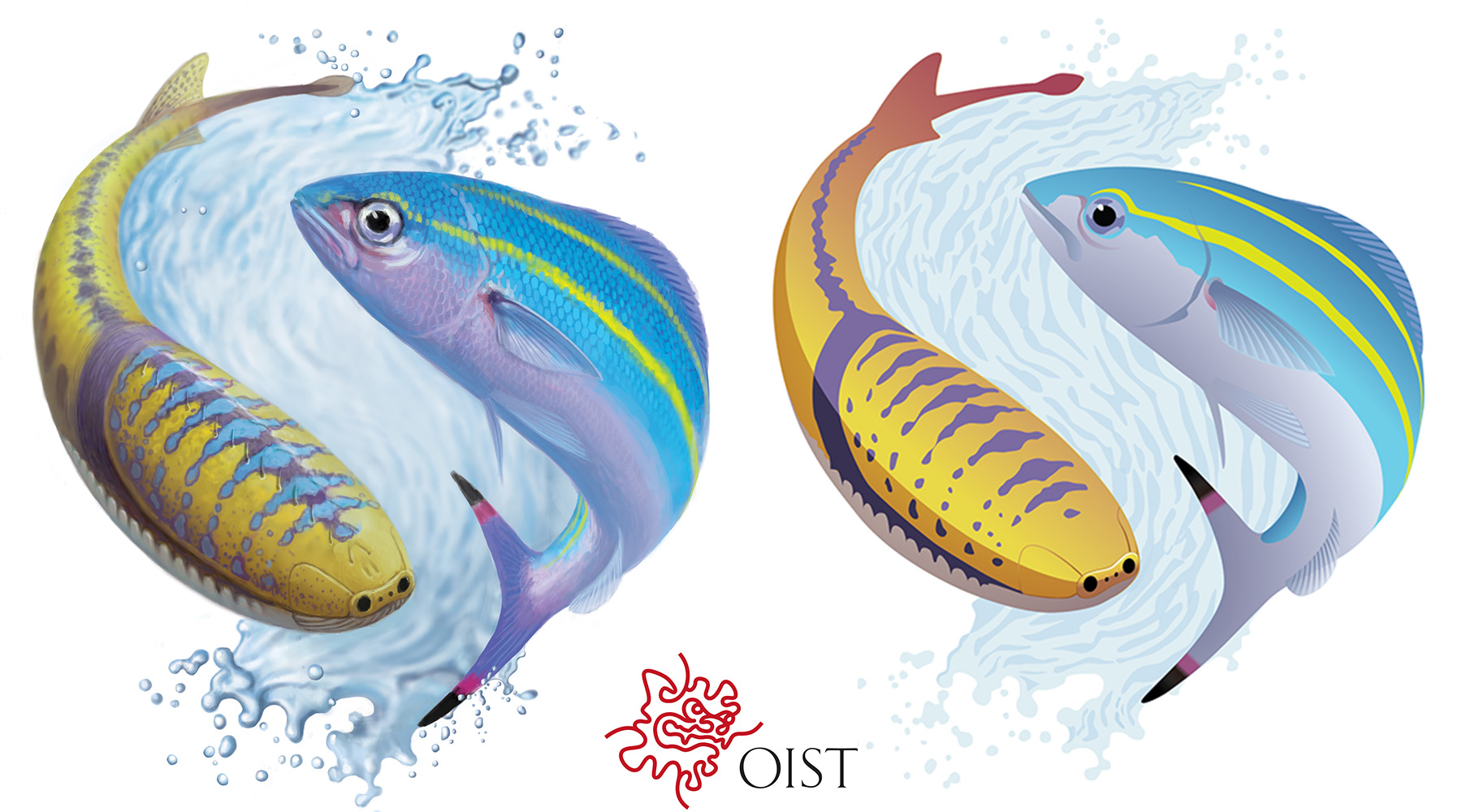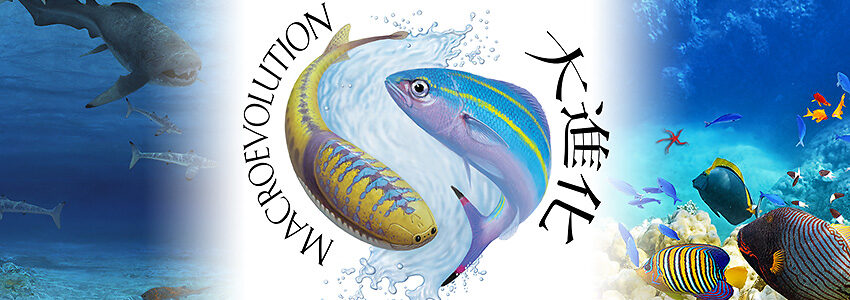Macroevolution Unit (Lauren Sallan)
Overview
The Macroevolution Unit investigates how environmental change, global events, ecological interactions and key traits shaped biodiversity on timescales outside human observation (macroevolution). We seek to determine the origins of major vertebrate groups (particularly fishes) and key ecosystems (particularly marine and freshwater) as well as understand how species respond to big challenges – living or environmental, regional or global, gradual or sudden.
Our work synthesizes approaches, observations, and discoveries spanning across a broad range of scientific areas relevant to major questions about the past, present, and future of biodiversity. We undertake computational analyses of newly-constructed biodiversity databases for fishes (half of standing vertebrate diversity), early vertebrates (half of vertebrate evolutionary history) and ecosystems. We work at scales ranging from local to global, from communities to phyla and from the present day to the last 600 million years. We also undertake detailed investigations of morphological biodiversity at the species level, investigating various forms and features from developmental, biomechanical, ecological angles. We use methods from fields as varied as community ecology, fluid dynamics, phylogenetics, and mechanical engineering (to name a few).
Paleontology is a thriving science at the intersection of other multiple fields and technologies. There is no bigger data than the fossil record, and we mine very bit of it. We use CAT scans, we use isotopes, we use genomes, we use mathematical simulations, and all kinds of analytics.
Our current areas of interest include how crisis and opportunity (e.g. the “Big Five” mass extinctions, Ice Ages, Global Warming) shaped fish biodiversity, the origins of major animal groups past and present (e.g. ray-finned fishes, sharks, jawed vertebrates, reef fishes). Our projects range in scope from the functional value and evolvability of “key innovations”, to the unequal impacts of mass extinctions and global crises, to the influence of new, “invasive” predators on the construction of marine ecosystems, to the timing and triggers of diversification and diversification “failure” (e.g. persistence at low diversity).
Primary Study Groups
Ray-finned fishes (Actinopterygii; e.g. salmon, tuna and their relatives)
This group represents the majority of vertebrate species in the modern world (>34,000 species). Ray-fins have dominated aquatic ecosystems since the mid-Paleozoic, come in myriad functional forms, and are widely used in evolutionary and ecological research. They also have an excellent fossil record, containing thousands of complete specimens and preserving traits from which function and ecology can be inferred.

Cartilaginous fishes (Chondrichthyes; e.g. sharks, rays, chimaeras and their relatives)
This group includes just 1,200 living species, mostly marine apex predators, bottom-dwellers or deep-sea residents. However, there is evidence that chondrichthyans exhibited much higher diversity in ecology, habitat, form, and size in the distant past, rivaling and perhaps even displacing modern reef fishes. The winnowing of this highly derived group into the apparent “primitive” forms seen today may be due to mass extinction or competition.

Early Vertebrates
This group represents more than half of the total evolutionary history of vertebrates. Modern vertebrate biodiversity began in the Paleozoic (541-251 million years ago), an interval containing both the origins of major living groups (e.g., ray-finned fishes, tetrapods) and major events in their evolutionary history (e.g., the end-Devonian mass extinction and the subsequent diversification of survivors, 359 million years ago). It includes the earliest species to feature supposedly key traits such as jaws, teeth, limbs, gills and lungs, many of which belonged to now extinct or rare groups such as placoderms, jawless fishes and lobe-finned fishes.

Aquatic Ecosystems
Vertebrates and invertebrates do not exist in vacuum, either in modern reefs or in the past. Ecological interactions, such as predation and competition, between these groups in the first half of their evolutionary history is likely to have affected the course of evolution, both of the lineages themselves and ecosystem structures, leaving a significant imprint on later biodiversity. While observation of modern ecosystems are limited to a snapshot of time, fossil ecosystems preserve and average thousands or millions of years of cascading interactions and environmental change, giving a window to longer-term consequences.


The Macroevolution Unit Logo
The Unit logo (painted by John Megahan) contains two very different fishes representing the scope of our research interests in terms of study groups, timespan, and morphological change.
The fish on the left is Sacabambaspis, one of the earliest jawless fishes with bone (armor) and one of the earliest relatives of modern fishes with jaws. This fish was relatively common in shallow subtidal marine waters throughout the Southern supercontinent of Gondwana 465-460 million years ago, including in modern day Bolivia, Argentina, Australia, and Oman.
The fish on the right is the official fish of Okinawa Prefecture, Caesio diagramma, also known as Gurukun (グルクン Okinawan), Takasago (タカサゴ standard Japanese), and the Banana Fish or Double-lined Fusilier (English). This fish is very common in coral reef settings throughout the Indo-Pacific, including Okinawa where it is used in a variety of local dishes.
Sacabambaspis and the Gurukun exhibit the same adult size at 25 cm, and may have exhibited similar lifestyles, suction feeding on zooplankton.




